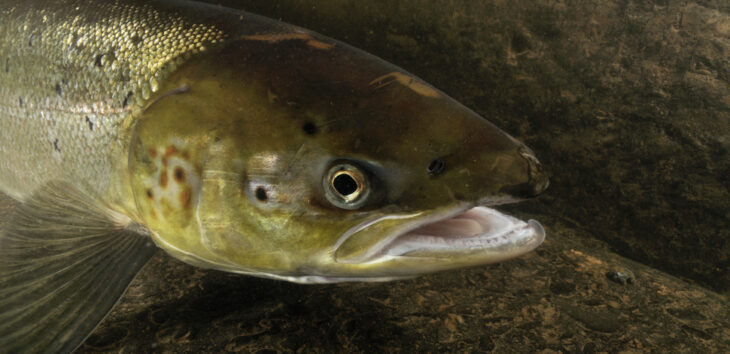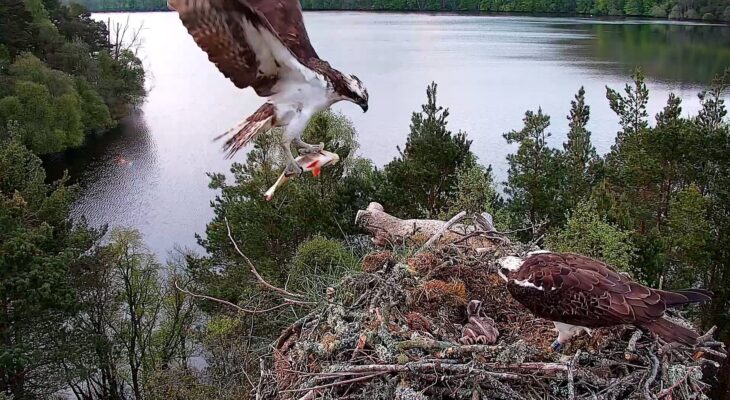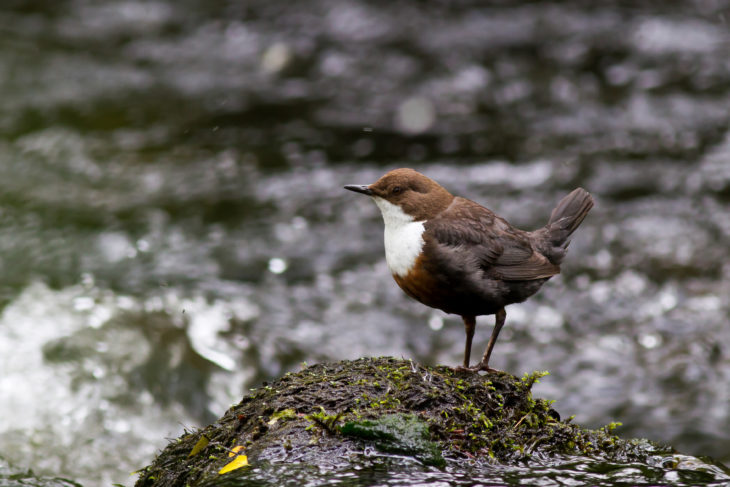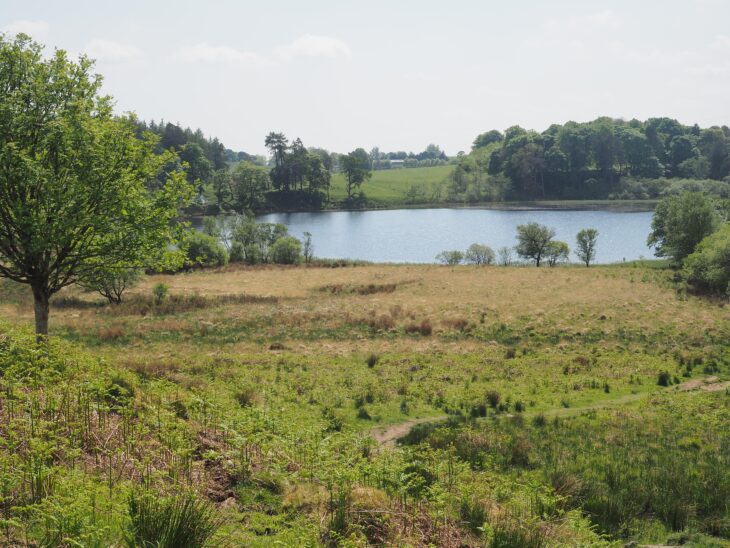Wild Isles: Freshwater
We go an underwater journey in the Wild Isles: Freshwater episode where Atlantic salmon have been filmed with aquatic drones to follow their fascinating migration.
Featuring the lifecycle of Atlantic salmon is a perfect way to enjoy different habitats from the high mountains to the low mud flats and meet the wildlife that lives in, on and around rivers. It also highlights how interconnected our land and sea are, even if they are hundreds of miles apart.

A recent webinar by our Living Seas Team on Atlantic salmon featured Mark Bilsby, CEO of the Atlantic Salmon Trust and Dr Willie Yeomans, Catchment Manager at the Clyde River Foundation who talked about the practical work being undertaken to monitor Atlantic salmon. Acoustic tracking of young salmon with the Moray Firth Tracking project to monitor their movements out at sea. While the reduction of pollution and removal of barriers such as weirs along the River Clyde has helped to see a return of breeding salmon to this famous river.
Our Living Seas Manager, Dr Jessica Jones shared the many problems Atlantic salmon are currently facing including poor water quality, changes to river flow, migration barriers, sea lice from aquaculture, habitat loss along rivers, predation and fishing, rising river temperatures, and invasive non-native species.
Watch the webinar below to learn more about current work to conserve Atlantic salmon.
You can read our policies on aquaculture and fisheries management here which we have produced as part of our Living Seas advocacy work.
Atlantic salmon are a key indicator species for the quality of our rivers. To halt the decline in their population an ecosystem approach at a landscape scale is required to improve woodlands along rivers to keep river water cold and clear. This is exactly what salmon and other species such as freshwater pearl mussels require. Good river quality is also vital for salt marshes and sea grass meadows further downstream. Trees along our burns, rivers and lochs all help to regulate water temperature by providing shade. They also provide nutrients from leaf litter and fallen branches help to act as dams to slow water flow during flooding episodes.
The Trust-led Riverwoods initiative started in 2019 to bring a wide network of organisations together to look at ways of improving rivers on a tributary scale. Read more about this project to restore riparian woodlands here.
Enjoy a day out at some of our freshwater reserves

Watch ospreys at Loch of the Lowes, Perthshire
Our Loch of the Lowes reserve was the first one purchased by the Trust over 50 years ago in 1969 and designated a Site of Special Scientific Interest for its underwater plant communities, specifically slender naiad. The loch has been home to ospreys since 1969 and plays a vital role in their conservation in Scotland. Watch our breeding pair live on their nest with our webcam where the main fish they feed their chicks are brown trout, perch and pike.
Look out for beavers, red squirrels and nuthatches from our visitor centre. Find out more here.

Look out for dippers on the Falls of Clyde, Lanarkshire
This National Nature Reserve is famous for its spectacular waterfalls, historic visitors and scenic woodland walks. Over 100 bird species have been recorded including dipper, raven and kingfisher. Daubenton’s bats can be spotted feeding over the river in the evenings.
Badgers forage in the undergrowth and otters are sometimes seen along the riverbank.
Find out more about the reserve here.

Walk around Loch Ardinning, Stirling
Enjoy a selection of two walks around this scenic reserve with its mix of wetland, woodland, grassland and moorland making it an ideal place to spot a variety of bird life. In July, the delicate water lobelia, a local speciality, flowers, while dragonflies dart around and wildflowers provide a blast of colour and valuable pollen and nectar for insects.
Find out more about the reserve here.
Join us
Our reserves are free to access but as a charity, we rely on the support of nature lovers like you to keep our critical conservation work going. Join today from just £3 per month and help to protect Scotland’s wildlife for the future.
Help protect Scotland’s wildlife
Our work to save Scotland’s wildlife is made possible thanks to the generosity of our members and supporters.
Join today from just £3 a month to help protect the species you love.
Preface
We go an underwater journey in the Wild Isles: Freshwater episode where Atlantic salmon have been filmed with aquatic drones to follow their fascinating migration. Featuring the lifecycle of Atlantic …
